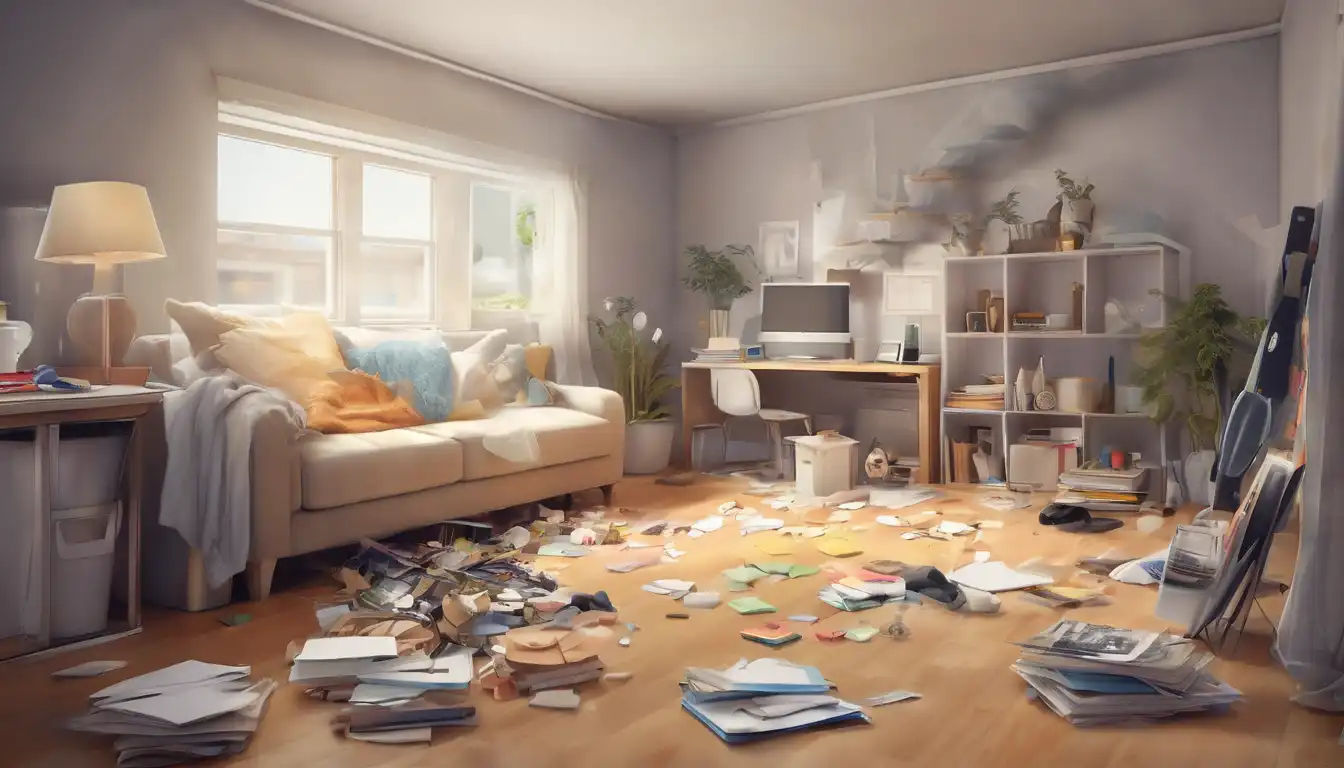Transform Your Space with These Effective Decluttering Methods
Living in a cluttered home can create unnecessary stress and make daily life more challenging than it needs to be. Many people feel overwhelmed by the thought of decluttering, but with the right approach, you can transform your living space quickly and efficiently. This comprehensive guide will walk you through proven strategies to help you reclaim your home and create a more peaceful environment.
Why Decluttering Matters More Than You Think
Before diving into the practical steps, it's important to understand why decluttering is worth your time and effort. A clutter-free home reduces stress, saves time searching for items, makes cleaning easier, and can even improve your mental clarity. Studies show that organized spaces contribute to better focus and productivity. If you're struggling with home organization, these benefits make the process worthwhile.
Step 1: Set Clear Goals and Prepare Your Mindset
Begin by defining what you want to achieve. Are you looking to create more space, prepare for a move, or simply reduce visual chaos? Set specific, measurable goals like "clear out the kitchen counters" or "organize the bedroom closet." Gather essential supplies: boxes for donations, trash bags, and cleaning supplies. Mentally prepare yourself to make quick decisions about your belongings.
Step 2: The Four-Box Method for Efficient Sorting
This classic decluttering technique involves using four containers labeled: Keep, Donate, Trash, and Relocate. As you work through each area, place every item into one of these categories. Be honest with yourself about what you truly need and use regularly. If you haven't used something in over a year, it's likely a candidate for donation or disposal. This method prevents the common mistake of simply rearranging clutter.
Step 3: Tackle One Room at a Time
Start with the easiest room to build momentum, or begin with the most problematic area if you're feeling motivated. Work systematically through each space rather than jumping between rooms. Complete one area before moving to the next to maintain focus and see tangible progress. For larger homes, consider breaking rooms into smaller zones to avoid feeling overwhelmed.
Step 4: Implement the 15-Minute Daily Habit
Consistency is key to maintaining a clutter-free home. Set a timer for 15 minutes each day to tackle small decluttering tasks. This could be organizing a single drawer, clearing a countertop, or sorting through mail. These small, regular efforts prevent clutter from accumulating and make the process feel less daunting than marathon cleaning sessions.
Step 5: Create Smart Storage Solutions
Once you've pared down your belongings, organize what remains with intentional storage. Use vertical space with shelves, invest in drawer organizers, and label containers for easy identification. Consider implementing the "one in, one out" rule: when you bring a new item home, remove something similar to maintain balance. Proper storage solutions are essential for long-term organization success.
Step 6: Develop Maintenance Habits
Decluttering isn't a one-time event but an ongoing process. Establish daily habits like making your bed, dealing with mail immediately, and putting items back where they belong after use. Weekly routines might include a quick sweep of common areas and monthly deeper cleaning sessions. These habits will help you maintain the organized space you've worked hard to create.
Common Decluttering Challenges and Solutions
Many people struggle with sentimental items or fear of needing something later. For sentimental objects, take photos before letting them go or keep only the most meaningful pieces. For items you're unsure about, use the "maybe" box technique: store questionable items out of sight for a set period, and if you don't retrieve them, it's safe to let them go.
Room-Specific Decluttering Strategies
Different spaces require tailored approaches. In the kitchen, focus on expired foods and duplicate utensils. For bedrooms, tackle clothing you haven't worn recently and old linens. Home offices benefit from digital decluttering alongside physical organization. Bathrooms often accumulate expired products and unused toiletries that can be cleared out quickly.
When to Seek Professional Help
If you're dealing with extreme clutter or emotional attachments that prevent progress, consider consulting a professional organizer. They can provide objective guidance and practical solutions tailored to your specific situation. Sometimes an outside perspective is exactly what's needed to break through organizational roadblocks.
The Psychological Benefits of a Decluttered Home
Beyond the physical space, decluttering offers significant mental health benefits. Reduced visual noise can lower anxiety levels, while the act of organizing provides a sense of control and accomplishment. Many people report better sleep, improved relationships, and increased creativity after decluttering their living spaces. The process itself can be therapeutic and empowering.
Sustainable Decluttering Practices
As you remove unwanted items, consider environmentally responsible disposal methods. Donate usable goods to local charities, recycle what you can, and properly dispose of hazardous materials. Some communities offer bulk item pickup or special recycling events. Sustainable decluttering ensures your organizational efforts benefit both your home and the environment.
Maintaining Your Progress Long-Term
The final step involves creating systems that prevent clutter from returning. Regular seasonal purges, mindful shopping habits, and family involvement in maintenance can all contribute to lasting organization. Remember that perfection isn't the goal—functional, peaceful living spaces are what matter most. Celebrate your progress and acknowledge that occasional clutter is normal and easily manageable with your new skills.
Decluttering your home doesn't have to be an overwhelming task. By breaking the process into manageable steps and developing consistent habits, you can create and maintain an organized living environment that supports your wellbeing. Start small, be patient with yourself, and remember that every item you remove brings you closer to the peaceful home you deserve. For more home organization tips, explore our other guides on creating functional spaces.
